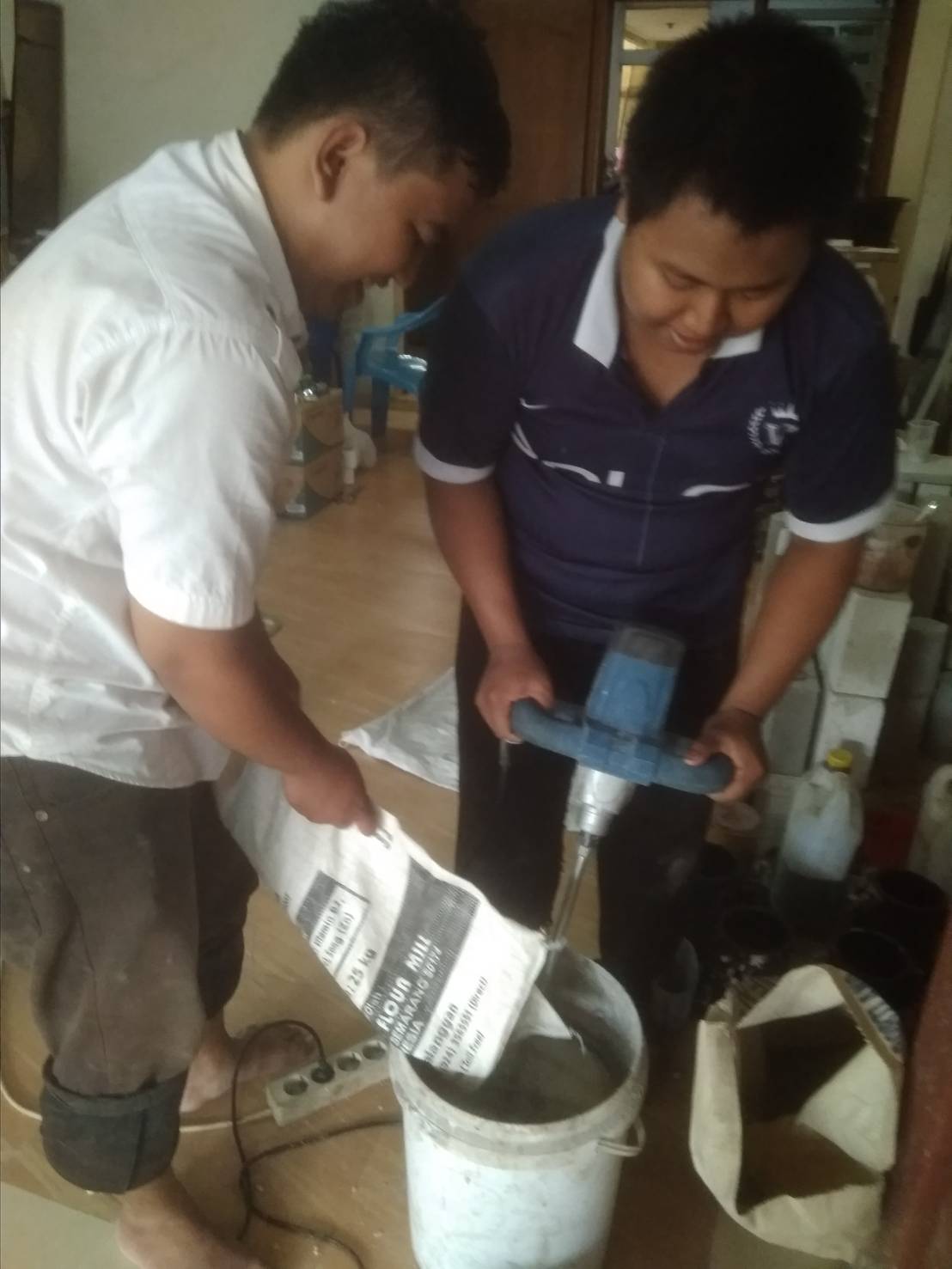UNAIR NEWS – The creation of a sturdy and earthquake resistant building is the dream of everyone. However, this is still an obstacle in overcoming it, given the geographical location of an area also influences it.
Realizing these problems, three Universitas Airlangga students (UNAIR) Andhika Alfa Musthofa (Faculty Fisheries and Marine 2015), Muhammad Zulfikar Alfian Bahtiar (Faculty of Fisheries and Marine 2015) and Farid Maulana Ibrahim (Faculty of Science and Technology 2015) made innovation using waste seaweed as lightweight brick material. The use of sand in the light brick making will later be substituted by Kappaphycus alvarezii seaweed waste.
Currently, the innovation underway proposed by three UNAIR students in the form of Student Creativity Program in Exact Research (PKM-PE) with the title “Utilization by-product Kappaphycus Alvarezii as a Lightweight Brick Earthquake Resistant Material.” The proposal was guided directly by Annur Ahadi Abdillah, S.Pi., M.Si. Please note, the innovation received a response from both the Ministry of Research, Technology and Higher Education and passed funding.
Andhika Alfa M., as the team leader, explained that currently the research is still ongoing and is already in the stage of drying light brick. The result will be ready to be tested on upcoming June 24, 2019.
“The background of this idea is the amount of waste produced by carrageenan from seaweed Kappaphycus Alvarezii as much as 65-70% and the proliferation of seaweed processing industries in Indonesia. According to Ministry of Industry in 2013, carrageenan production reached 12.5 million tons and continues to increase every year. Every year, there are around 25 million tons of waste produced by carrageenan processing, and until now there is still no utilization of this waste in bulk, “he said.
Some literature states there is cellulose content in seaweed processing waste. So that it can make a bond as material, this is evidenced by the research used as a Medium Density Fibreboard/type of processed wood made from compacted wood chips).
“The light brick that we offer is expected to be stronger compared to ordinary light brick. The combination of this with carrageenan waste according to our hypothesis can increase the pressure and the bending strength of light brick because the waste has a character similar to sand and suitable for earthquake resistant material. Besides, carrageenan waste will be able to increase the strength of the bonds generated from cement due to the presence of cellulose, “he added.
Utilization of marine ruminants into lightweight bricks was chosen because Indonesian territory was very prone to earthquakes. Whereas the buildings easily collapse, even though they are not exposed to cracks from the ground. This is due to the construction that is neither durable nor fragile material. Fragile and stiff material like bricks can cause cracks in the walls until the building collapses. (*)
Author: Muhammad Wildan Suyuti
Editor : Khefti Al Mawalia





